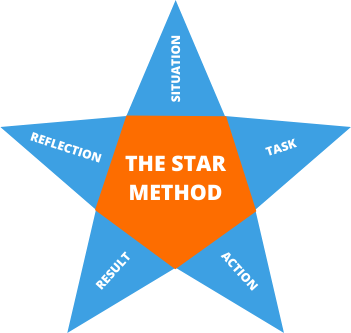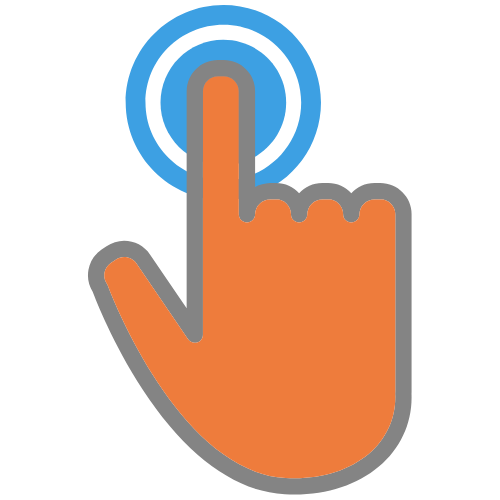As more of the workforce moves to the virtual office, businesses are under mounting pressure to accurately assess potential candidates prior to hiring. One of the ways companies are finding to avoid costly mistakes is by using behavioral interviewing techniques. Currently, this is the most widely-used form of job interview used by recruiters and hiring managers. The best way to ace this type of interview is to use the STAR interview response method, which is a structured way to respond to behavioral interview questions.
As you prepare for a job search or career transition, you should create a list of STAR formatted accomplishments that you can use for both your resume and for the interview. By learning how to design your responses and effectively highlight your experience, you can gain an important edge in your next remote interview.
What is a Behavioral Interview Question?
A behavioral interview question focuses on the candidate’s past experiences by asking for specific examples regarding how they used their knowledge, skills, and abilities in previous situations. The belief is that the most accurate way to predict an individual’s future performance is by looking at their past responses.
Recruiters hope that responses to well-designed behavioral questions will elicit responses that accurately illustrate a candidate’s skills and abilities in job-related competencies. They are also looking for information that is verifiable and objectively comparable with other interviewees.
A few examples of the most common behavioral interview questions include:
- Tell me about the last time a customer or co-worker got upset with you.
- Tell me about the toughest decision you’ve had to make in the past six months.
- Give me an example of a major mistake you made, and what you did to correct it.
What Is the STAR Method Response?

The STAR method emerged as a structured way to design a behavioral interview question. However, it’s also a great way to guide the development of an appropriate response. Here’s the format:
S = Situation. Think of a situation that is relevant to the question asked. Make sure it’s one that ended successfully or on a positive note. Concisely describe the situation, the context, and how it ties into the question. Also, include any obstacles that you were up against.
T = Task or Target. Now describe the task or role that you were assigned in the situation. This can also refer to your goal, or target, in the situation as well. Here you can highlight the challenges you faced.
A = Action. This is where you can highlight what you did or the actions you undertook. Include specifics here such as the process you undertook, any technical skills and knowledge you used, and any soft skills you employed. If you were part of a team, make sure to describe what the team did, but also what you specifically contributed.
R = Result. Your response should end with specific and quantifiable outcomes as much as possible. Describe your contribution and the impact of your actions. Also, be sure to relate the results back to the question that was asked.

Pro Tip: Add R = Reflection (for extra brownie points). If appropriate, you can also add further information on how the situation changed your future behavior or the behavior of the team or company. For example, new processes or procedures.
Benefits of Using the STAR Method
Using the STAR method to structure your responses to behavioral questions in an interview provides numerous benefits.
- Show off your skills. By showing how you have used your skills and abilities in practical applications, you provide the interviewer with insights into how you will fit into their organization or company culture.
- Give focused responses. A STAR interview response provides the interviewer with exactly the information they are seeking. This is critical when responding to behavioral questions as interviewers frequently will grade your responses to questions based on a STAR response.
- Take the wheel. STAR responses allow you to control the direction of the interview and effectively highlight your strengths in areas where you have an advantage.
Types of Questions the STAR Method Is Good for Answering
As noted above, the STAR method is predominantly used for answering behavioral interview questions, or questions that ask for specific examples of your behavior based on previous experience. These questions will always ask you to describe a specific situation in your experience to illustrate a job-related competency. They are easily identified by their lead in such as:
- Can you provide an example of…
- Have you ever encountered…
- Tell me about a time…
Some common skill areas that behavioral questions are used to explore soft skills such as teamwork, problem-solving, leadership, conflict resolution, and the ability to manage work pressures. In many cases, the questions will explicitly ask you to describe a situation that had a successful outcome. However, the trickier questions will not. These questions can trip you up if you’re not careful.
You can also use this approach to add interest and effectively respond to a variety of other typical interview questions as well. For example:
- Tell an anecdote that explains your current career goals.
- Highlight your strengths and weaknesses using examples.
- Tell a story about why your co-workers describe your work style the way they do.
How to Prepare for an Interview Using the STAR Method
In order to have a successful STAR response to questions during an interview, it helps to prepare. While canned or memorized responses are unlikely to impress, there are several steps you can take to ensure you’re not caught off-guard.
- Identify and craft potential questions. The first thing is to identify the behavioral questions that may be asked. Study the job ad thoroughly and list the required competencies. How could these be posed as behavioral questions? In addition, carefully review the accomplishments you have listed in your resume and create questions based on those. You can count on being asked about your resume accomplishments.
- Write out draft responses. Go through each letter of the format and develop responses. Be concise but thorough and add as much quantitative information as possible. How many are on your team? What was the value of the project? How much time or money did you save?
- Revise your responses. Read through what you wrote to ensure that your response is on topic, accurate, and relevant to the question posed. If you still know colleagues who were involved, check with them to make sure you didn’t miss any salient points, and have friends read over for grammar.
- Practice the responses out loud. In most instances, you deliver responses orally. As a result, it’s a good idea to practice your vocal responses. Recruit anyone who will listen with a critical ear and ask for feedback. You can also make audio and video recordings of your responses so you can get a firsthand understanding of how your pace, tone, or body language may be viewed by an interviewer.
STAR Method Example Response
Example Question: Describe a time when you struggled to build positive relationships with virtual team members. How did you handle that?
Situation: I was working on a small team tasked with planning a virtual training event for our company. None of us had met in person or worked together before. Difficulties in communication arose almost immediately with differing perspectives and no common ground.
Task or Target: I had been looking for ways to take on a more leadership role and saw an opportunity in this situation to improve team dynamics so I offered to facilitate our meetings.
Action: When I prepared for each team meeting, I included brief ice breakers at the start to help team members get to know each other and build trust. In addition, I contacted each team member after meetings to identify areas to be addressed in the next meeting.
Result: As a result, the team started working really well together and our training event was a great success. Attendance was up 54% over the pervious year and the feedback we received was overwhelmingly positive.
Reflection: Because of our team’s success we were asked to do the event the following year as well. In addition, this experience has helped me bring together several other virtual teams that were struggling with engagement problems.
7 Tips for Effectively Using the STAR Interview Method
Behavioral interview questions are often difficult to answer, but with good reason. Interviewers often use these questions to assess the capabilities of a candidate outside of experience and education. However, you can avoid common pitfalls with the following tips:
- Answer the question asked. Make sure you understand the question before you launch into a lengthy response. Missing the point or answering the wrong question is a quick way to turn off an interviewer.
- Don’t memorize! This will make you seem stilted and robotic during the interview. It will also make improvisation more difficult if you need to change the focus of a response on the fly.
- Avoid being vague. Interviewers are looking for specific examples with quantifiable, verifiable information.
- Be honest. Don’t lie or embellish your responses. Interviewers are very good at poking holes in stories.
- Stay on track. Sometimes it’s easy to get lost in the middle of a story, or worse, forget the point. If you do get lost, stop and regroup. You don’t want to ramble on aimlessly.
- Only use positive examples. Make sure your STAR response has a happy ending. You are the hero of your story. So, make sure you don’t flip over to the villain.
- If you don’t have an example, say so. If you don’t have an experience that answers the question, it is better to say so upfront and respond hypothetically. Instead, describe how you would respond in the given scenario.
How to Use the STAR Method During a Phone Interview

Phone interviews are frequently used as a method for screening candidates prior to a more in-depth interview. However, even an initial interview will have opportunities for STAR interview responses. For example, you can give examples of your recent work experience to highlight your competencies and expand on the accomplishments listed in your resume. Below are a few things to keep in mind when giving a phone interview:
- Speak to your audience. If possible, try and research the person interviewing you beforehand. If it is a recruiter or human resources officer, they may not have an in-depth technical understanding of subject matter such as programming or IT.
- Take advantage of not having a visual connection. Refer to the written STAR responses you created in case you forget a detail or two. Don’t have too much information though; you don’t have time for reading.
- Keep a measured pace. Pay attention to keeping a comfortable conversation pace and talking speed. It is easy to talk too fast or think that small pauses last forever during a phone interview.
- Listen carefully. Make sure you are in a quiet location and use headphones if you can. It’s easy to miss question details and other subtle cues. Consider writing down the questions and repeating them before answering.
How to Use the STAR Method During a Video Interview
During a video interview, you can really sparkle using the STAR method. Recruiters and hiring managers dedicate themselves to learning more in-depth information about how you might fit in the organization at this stage. It’s also possible to have more than one video interview to meet with teams and department heads that you will be interacting with if you get the position. This complexity adds to the stress, so be sure to take the following into account during video interviews:
- Speak to your audience. As with phone interviews, you want to be aware of who you will be speaking with and target your responses. How you talk with a team is much different than what you say to the boss.
- Cheat sheets rule. While there is a visual connection, they can’t see everything so go ahead and pull those cheat sheets out again. To prevent breaking eye-contact, display your information on the computer.
- Pay attention to your background. It’s important to give the impression that you have a dedicated and quiet office space when you work remotely. Make sure that something appropriate is visible behind you.
- Dress the part. Whether they can see your legs or not, it is a good idea to dress for an interview top to bottom. This avoids potential embarrassment and helps you to feel every inch the professional.
- Watch for body language. Pay attention to facial expressions and body language of your interviewers as some of this information gets lost in the ether. Also, pay attention to your body language and make sure you look calm but engaged as you answer.
A Final Word on the STAR Method
While it may take a little extra preparation time, try incorporating the STAR method in your next remote interview. You may be surprised at how effectively you can highlight your relevant accomplishments. In no time, you will have the interviewer imagining how beneficial you will be to their organization. For further information on interview preparation for remote workers, check out these resources below.
Additional Resources:

Overcoming Job Interview Anxiety: 17 Tips for Remote Workers
Follow these 17 tips for overcoming job interview anxiety before, during and after interviews to give potential remote work employers the best impression.

19 Questions Never to Ask in a Job Interview
Can one wrong question cost you a job? Easily! Avoid disappointment by learning what questions to never ask in an interview with a potential employer.

How to Prepare for a Remote Interview
Use these tips to help you prepare for a remote video interview and land your next work from home job.
Have you had any success with the STAR method as an interviewee? Or have you heard a great STAR method answer as a recruiter or hiring manager? Connect with Virtual Vocations on Facebook, Twitter, LinkedIn, Instagram, and YouTube to share your story. We’d love to hear from you!

Join Virtual Vocations
Joining Virtual Vocations grants you access to our hand-picked remote jobs database. Learn how our service works, browse job leads by location and career category, or search hundreds of hand-screened remote jobs to find legitimate work-at-home job leads that match your skills and background. Register for free or contact us for more information on our service guarantee.
Check out our menu of Career Services provided by our team of certified professionals, including resume and career coaching services for remote jobseekers. Resume assessments and writing, LinkedIn profile enhancement, and cover letter writing are available to maximize the success of your remote job applications. Discounts on all services available to subscription members, become one now.




